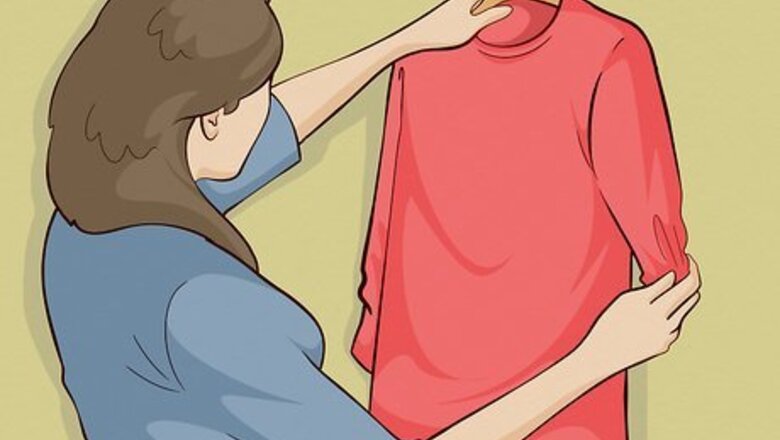
views
Assembling a Wardrobe
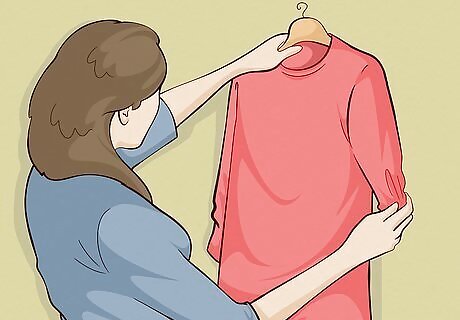
Get rid of clothing you no longer want. It's easy to accumulate so much clothing that you become overwhelmed by it. Sort through all of your clothing and get rid of anything that doesn't make you feel great when you wear it. If you're having trouble deciding whether or not to keep something, ask yourself: Does this still fit me? Would I like to wear this right now? Do I feel confident in this? Do I feel good when I wear this? Are there occasions where I would wear this again?

Repurpose your older clothing. Look at the clothing that you kept, but don't wear very often. You might want to tailor pieces to create new clothing items. A classic example is to cut the legs off of an old pair of denim jeans, creating denim shorts. But, you can create more unique pieces with older clothing. Try: Getting your clothing tailored. If you have a classic suit, but you never wear it because it's too large, get it taken in. Consider using the fabric from a vintage skirt to create a new shirt or bag. Dress up a vintage t-shirt by wearing it with a tailored blazer or sports jacket.
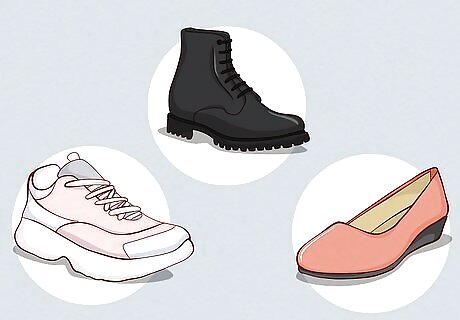
Sort your shoes. You should have shoes for a variety of situations. To keep things simple, start by making sure you have shoes for work (whether they're dressy or active), running around, casual everyday wear, and dressy or formal situations. For example, you may want: Active: sneakers, boots Dressy: oxfords, pumps, heels Casual: sandals, boots, flats, loafers
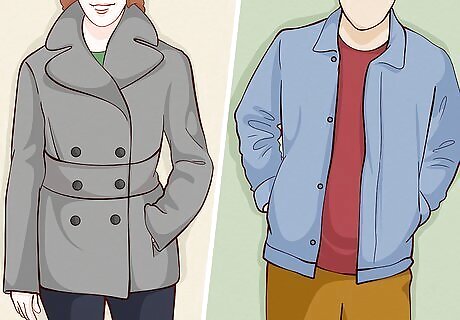
Locate your outerwear. Gather all of your jackets, scarves and hats in an easy to find place. This is something you may want to do seasonally, every 4 months or so. The outerwear you need for winter will be remarkably different than what you need in the spring or summer. Here are some examples of what to gather: Winter: heavy coat (like wool), larger warm scarves, beret, parka, beanie Spring: layering jackets (like cotton), cardigans, pullovers, blazers, fedora Summer: lighter jackets (like denim or bomber), baseball caps
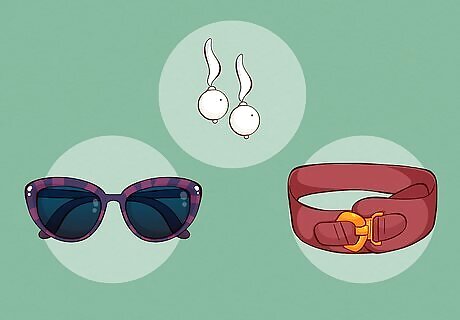
Gather your accessories. Find your sunglasses, jewelry, purses, belts, ties, and watches. These accessories are the finishing touches for your outfit, so try to have a variety of styles. Look at thrift stores, antique malls, garage sales, or shop for locally made items. To get started, try to find: Sunglasses: a simple black or tortoiseshell pair, a fun bright pair, aviators Jewelry: earrings, necklaces, bracelets, rings, cuff links, watches Belts: simple black or brown belt and wide patterned belt
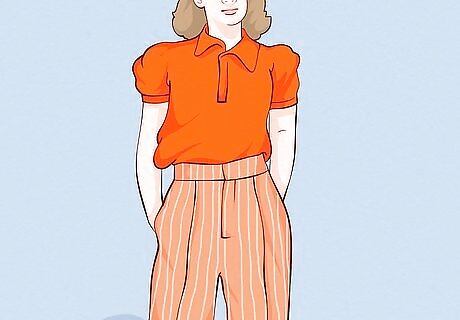
Get out of a style rut. Try something different. Look for clothing in different textures, colors, patterns, or style. If you don't feel like buying new clothes, spend some time pairing clothing pieces that you don't normally wear together. You might just find a new combination that reinvigorates your wardrobe. Break some fashion rules. Try pairing bright or patterned clothes with other bright patterned clothes. Or, layer different textures to add interest to a new look. EXPERT TIP Alena Le Blanc Alena Le Blanc Personal Stylist Alena Le Blanc is the Personal Stylist and the Founder of Le Blanc Label. Based in San Francisco, California, Le Blanc Label is the leading personal stylist brand for sustainable style transformations. Alena and her team specialize in seasonal wardrobe refreshes, closet edits, styling for special events, travel, photoshoots, and general personal needs. Alena has been featured in podcasts including EMPOWERED BY WMN, I Am Fearless, and Mind Power Meets Mystic. Alena received her BFA in Fashion and Apparel Design from the Academy of Art University. Alena Le Blanc Alena Le Blanc Personal Stylist Audit your wardrobe to make it fit your desired image. Curate outfits that reflect the image you want to project to the world. Focus on elegant pieces over fleeting trends. Build a style that is uniquely you and boosts your confidence. Clothes are the way you introduce yourself visually to the world.
Putting Together an Outfit

Consider the occasion or day. The perfect outfit should fit the kind of day you're having or event you're going to. You may need active wear if you're working out at the gym. Or, you should find a nice suit if you'll be in meetings for most of the day. Dressy events call for formal attire, while just hanging out at home means you can wear something comfy and casual. Don't be surprised if you need to change clothes throughout the day depending on what you have to do. Just be prepared and bring changes of clothes to meet your needs.
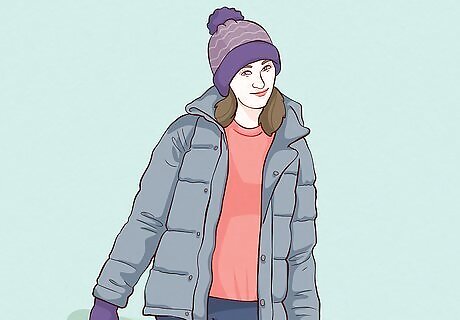
Check the weather. Your wardrobe should already be narrowed down by season, but you'll need to consider the weather for the day. You don't want to be in a hot wool suit if it's 90 degrees outside. Likewise, you'll regret wearing a summer dress if it's snowing outside. Check the weather forecast for the day or just look outside the window before you get dressed. If you're unsure what the weather may do, try to be prepared. Carry an umbrella, wear a cardigan, or bring a change of shoes if you think the weather may turn.

Select the focus of your outfit. Choose one piece of clothing that you know you want to wear and build your outfit around it. For example, you may choose a bright print tie or a striking blazer. To keep things simple, just choose one article of clothing to highlight. Don't worry if you'd also like to highlight an accessory. The goal of focusing on a clothing item is to help you fashion an outfit and avoid competing clothing items (like a striped shirt with striped pants and striped tie). It's important to build your wardrobe with plenty of basics, like simple tops and pants. That way, when you want to wear a statement piece, you'll always have something to pair with it.
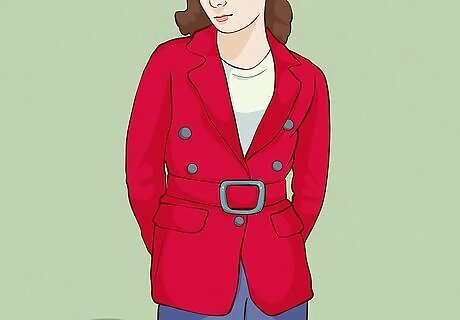
Wear outwear that compliments your outfit. Once you have a main clothing piece, choose clothes that accent the item. Avoid completely matching the pieces. This can make them compete for attention. Instead, look for things that really make your focus piece stand out. For example, if you've chosen a striking navy blazer, you might wear a simple white shirt and tan slacks. Or, if you've picked a bright yellow floral skirt, instead of wearing a yellow shirt or floral blouse, wear a navy or denim shirt.
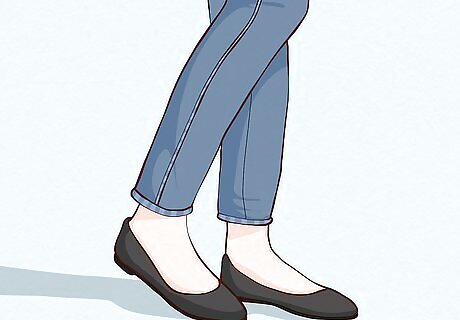
Wear the right shoes. The perfect outfit can seem out of place if your shoes are inappropriate. Again, take the weather and occasion into account. Don't forget that you should also be as comfortable as possible. This can be obvious, like wearing sneakers if you're going to be working out. Or, you may really need to consider your day. If you're wearing a simple dress which looks good with heels or flats and you'll be running from meeting to meeting, you may want to choose the more comfortable shoes. If you think you'll be on your feet for a long time, you may want to bring a comfortable pair of shoes that you can change into if your feet start to hurt.
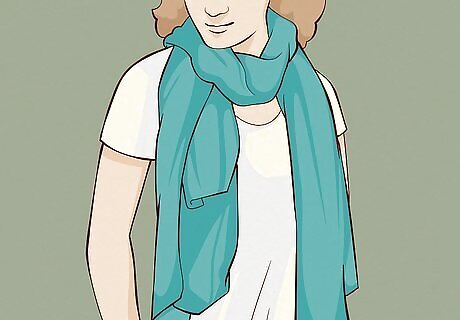
Consider adding accessories. To really make your outfit look put together, add an interesting accessory like cuff links or a scarf. This can add color or interest to a simple outfit. Or, if you have a really bright clothing item, a plain scarf can balance your look. Don't be afraid to try on several things until you find something that works. When adding jewelry, avoid wearing too many matching pieces. Doing so will make your look seem forced.
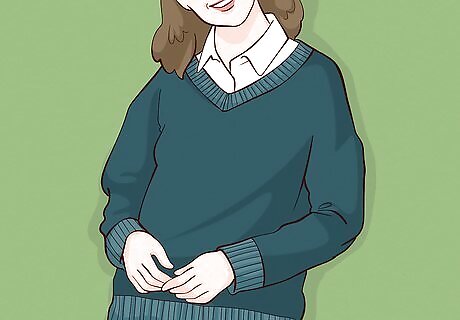
Dress up your uniform or usual look. Once you've found a few outfits that you really like, it's easy to keep wearing the same things. This can speed up getting dressed in the morning, but you may want to look more polished or stand out. Make sure your outfit looks mature. Avoid wearing graphic tees, hoodies, or clothing you would have worn 20 years ago. To make your look feel more put together: Wear a leather bracelet or classic watch. Make a casual sweater stand out by layering a crisp white or colored shirt underneath. Wear more dramatic makeup, highlighting your eyes or mouth (not both). Wear shoes that are a bit dressier than you'd normally choose. Apply cologne or perfume.














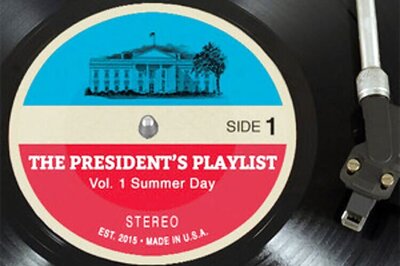



Comments
0 comment